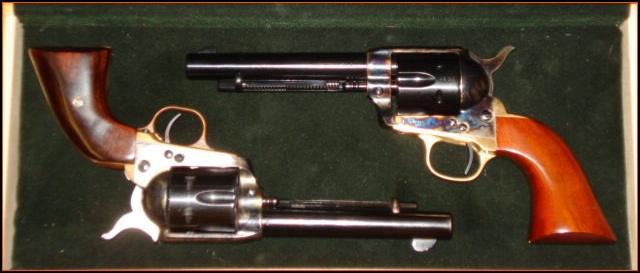Magnum Wheel Man
New member
I'm curious really how durable to wear is case coloring...
I have a pair of 51 Navy's that have been converted to 38 Long Colt... with a custom cylinder & recoil plate... instead of using / building a loading gate, the shield & frame were slotted to load the new cylinder... doing it this way leaves the slot tight enough, that it'll be a wear surface, by both my thumb / finger, & the brass rims rubbing in the slot...
I'm trying to figure out if I should have the frames re-case colored, or ??? the machined out area is currently cold blued... wondering if the case color will wear acceptably enough to justify the cost of re-case coloring, ( the guns were new replicas, & otherwise are quite striking ) or will that area wear quickly enough, that I'm better off leaving it cold blued, & touching it up as it wears ???
thoughts ???
I have a pair of 51 Navy's that have been converted to 38 Long Colt... with a custom cylinder & recoil plate... instead of using / building a loading gate, the shield & frame were slotted to load the new cylinder... doing it this way leaves the slot tight enough, that it'll be a wear surface, by both my thumb / finger, & the brass rims rubbing in the slot...
I'm trying to figure out if I should have the frames re-case colored, or ??? the machined out area is currently cold blued... wondering if the case color will wear acceptably enough to justify the cost of re-case coloring, ( the guns were new replicas, & otherwise are quite striking ) or will that area wear quickly enough, that I'm better off leaving it cold blued, & touching it up as it wears ???
thoughts ???



